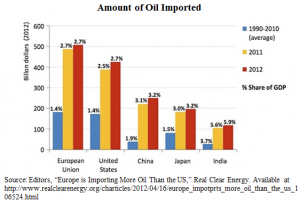As the Obama administration’s EPA continues to promulgate regulations that will effectively close coal plants, or prevent the construction of new ones, much of the debate over these regulations, and coal in general, has centered on the appropriateness of coal as an energy source — is it too polluting? Will it hurt the environment? Is it worth the cheap cost? Are coal alternatives too expensive?
There has been less focus, however, on the ability of the power grid to meet U.S. demand if more coal plants continue to go offline. While industry groups, states and energy companies have raised these concerns, the American public remains largely unaware of the ramifications of dialing back coal-powered electricity generation.
To much of the general public, the EPA’s regulations are simply making for a safer, happier, cleaner world.
But on April 10, the Senate Energy and Natural Resources Committee held a hearing on the reliability of the electric grid. At the hearing, Senator Lisa Murkowski made a rather astonishing statement: “Eighty-nine percent of the coal electricity capacity that is due to go offline was utilized as that backup to meet the demand this winter.”
The New York Times reported on this issue back in March — noting that it was American Electric Power, a Midwest energy provider that was running 89 percent of its soon-to-be-retired coal plants. And PJM Interconnection, a power grid operator that serves Pennsylvania, Maryland, and Ohio, among other states, set a record for peak energy use this winter season.
Next year is an especially significant year for coal, as April 2015 is when coal plants are required to be in compliance with the EPA’s Mercury and Air Toxics Standards rule. Compliance with the rule effectively means shutting down operations or spending hundreds of millions of dollars to conform — spending that will, of course, find its way into consumers’ power bills. Some parts of the U.S. already saw electricity prices this winter that were a whopping 10 times higher than last year’s average.
If, in order to meet this winter’s energy demands, providers had to use almost all of their coal capacity that is actually scheduled to be retired next year, what is going to happen if we have a particularly hot summer this year? Or another round of Polar Vortexes this upcoming winter, when those plants we relied on are no longer operating?
Mike Duncan of the American Coalition for Clean Coal Electricity echoed Murkowski’s concerns when he spoke with Fox News two weeks ago: “Regulation from five years ago is closing about 20 percent of the coal plants. Regulations being proposed now could close an additional 20 percent of coal plants. And that creates huge stresses — we’re just not ready for anything like that in this country.”
The EPA, of course, insists that reliability is not an issue and that coal will remain viable. But anti-coal groups know better. As a recent FOIA request revealed, the Sierra Club’s John Coequyt (head of the group’s Beyond Coal Campaign) forwarded a news story in an email to the EPA’s own Michael Goo and Alex Barron. The news story carried the headline “Coal to Remain Viable, says EPA’s McCarthy at COAL-GEN Keynote.”
Coequyt wrote just three words above the news story to his EPA friends: “Pants on fire.”
Losing coal would not be as much of a problem if we had a cost-effective, large-scale energy alternative available. But the environmentalist left will not touch nuclear power (an energy source that produces no carbon emissions), and renewables are unreliable and expensive, hardly suited to replace coal. If any coal survives the EPA’s onslaught, electricity will be markedly more expensive, hurting American consumers, especially the poor.
President Obama bragged of his plans to drive out coal in 2008: “If somebody wants to build a coal-fired power plant, they can. It’s just that it will bankrupt them. Under my plan, electricity rates would necessarily skyrocket.”
Those who cheered this plan either failed to realize, or did not care, that it was average, ordinary Americans who would have to, quite literally, pay the price.



